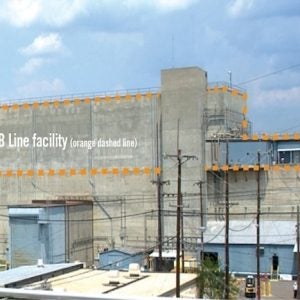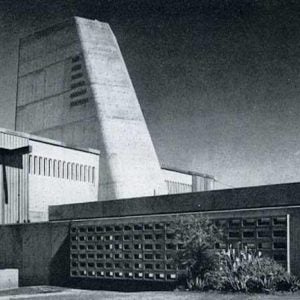
The Swedish government has submitted a bill to parliament proposing state loans to finance four new nuclear reactors as well as a contract-for-difference power price mechanism to support nuclear power investments.
In the 98-page bill the government proposes a new law on state support for investment in new nuclear power. The law regulates the basic conditions and forms of state support to enterprises for investment in new nuclear reactors in Sweden.
Aid may be in the form of government loans and bidirectional difference contracts, namely a contract between an operator, a power generation facility and the state that provides both a minimum compensation protection and a limit on overcompensation. Government loans may be submitted for the construction and test operation of new nuclear reactors and for planning and other preparatory measures for the construction.
Bidirectional difference contracts may be concluded for the routine operation of new nuclear reactors. Aid will be subject to conditions laid down in contracts between the state and the company receiving the aid. Aid may only be granted if new nuclear reactors are located on the same site and have a total installed electrical power of at least 300 MWe. However, the government may decide to grant aid even if the reactors have a total installed electrical power of less than 300 MWe if there are “special reasons”.
The bill contains different scenarios for future electricity prices. In a scenario with lower electricity prices, it is assumed that the strike price is around SEK0.02 ($0.002) per kWh higher than the electricity price. The new law is proposed to enter into force on 1 August 2025.
This came after Sweden’s new centre-right coalition government in 2022 adopted a positive approach to nuclear energy, outlining a roadmap in November 2023 for the construction of new nuclear generating capacity. This envisages the construction of new nuclear generating capacity equivalent to at least two large-scale reactors by 2035, with up to 10 new large-scale reactors coming online by 2045.
In December 2023, the government appointed Mats Dillén to submit proposals for models for financing and risk sharing for new nuclear reactors, so that the electricity market players in competition would have the opportunity to build new nuclear power. The model was designed so that nuclear power with a total power of at least 2,500 MWe, corresponding to the power of two large-scale reactors, would in place by 2035.
In January 2024, Energy & Industry Minister Ebba Busch appointed Carl Berglöf as national nuclear power coordinator to support the government in following up and analysing how the work with the expansion of nuclear power was progressing and identifying the need for supplementary measures. His assignment was to be be completed by the end of 2026.
In August 2024, a 297-page government study, Financing and Risk Sharing for Investments in New Nuclear Power, proposed that state aid should be given to companies for investments in new nuclear power following an application procedure. The proposed financing and risk sharing model envisaged: state loans to finance investments in new nuclear power to lower the cost of capital; a two-way contract-for-difference signed between the state and the nuclear power producer; and a risk and gain-share mechanism to give investors a minimum return on equity.
Energy Minister Busch described the government’s proposals for funding for new nuclear power as a clear answer that Sweden should be a strong nuclear power nation. “In order to secure the future, Sweden needs to secure base power. This is where nuclear power comes in as fossil-free and planned base power. At the same time, it is a fact that an expansion of nuclear power will require a lot of capital, which can slow down the actors who may be interested. Therefore, the state must take out loans to lend to the companies that want to build new reactors. The loan will start to be repaid when the nuclear power plant is completed and operational.
Financial Markets Minister Niklas Wykman said the support relates to four reactors. “This is a limited support of 5000 MWe, corresponding to four large-scale reactors. With access to the low Swedish government loan rate, this can be made much cheaper than with pure market financing,” he noted. The cost of four reactors has been estimated at a minimum of SEK400bn, with the state accounting for SEK300bn, in the form of loans.
Wykman said the bill also includes a price hedging agreement. “It aims to ensure that the producer is guaranteed a minimum compensation for the electricity you supply. It is financially designed so that it does not affect the incentives to produce. It should also not affect the usual market price that consumers and businesses face.”
It should also include a mechanism where risk and profit should be shared between the state and companies that want to build nuclear power. “If this becomes much more expensive or more difficult than anticipated, we should not be without basic power and there is an adjustment mechanism that allows the projects to continue,” Wykman explained. On the other hand, “If it turns out that this went smoothly and that the profit level is higher then taxpayers should of course be able to get it back.”
Vattenfall, which plans to have a new reactor in operation at its Ringhals site by the mid-2030s, welcomed the government’s proposals. “The state taking a clear role in financing is a basic prerequisite for it to be possible to invest in new nuclear power,” said Desirée Comstedt, the company’s head of new nuclear power. “Nuclear power is not being built anywhere in the world without some form of government support.”






